Ted Bundy described himself as "the most cold-hearted son of a bitch you'll ever meet." His crimes certainly prove that statement true.
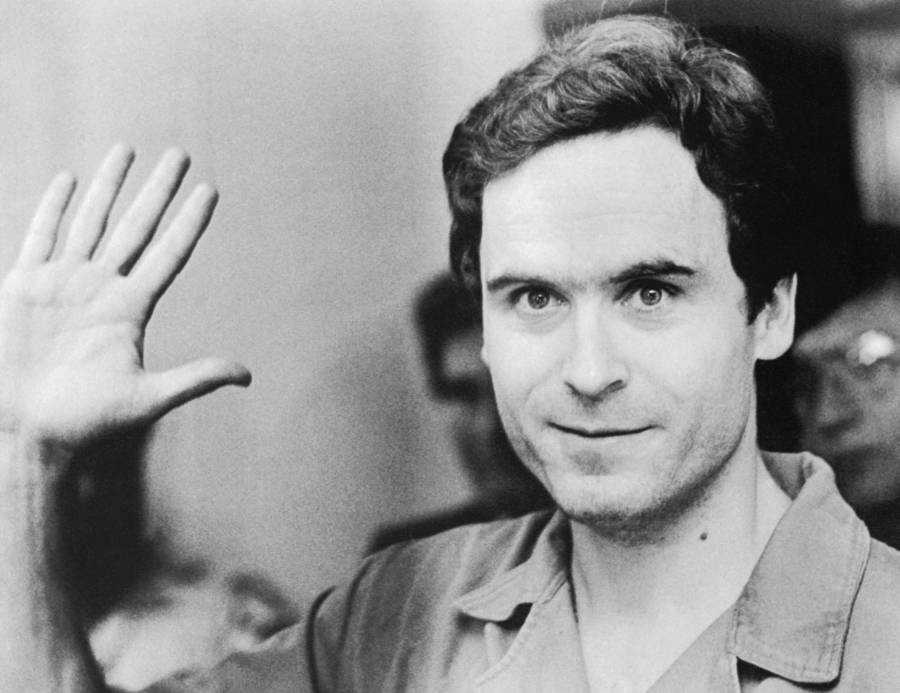
Bettmann/Contributor/Getty ImagesTed Bundy waves to television cameras during his trial for the assault and murder of several women in Florida in 1978.
During the spring and summer of 1974, police in the Pacific Northwest were in a panic. Young women at colleges across Washington and Oregon were disappearing at an alarming rate, and law enforcement had few leads as to who was behind it.
In just six months, six women had been abducted. Panic in the area reached a fever pitch when Janice Ann Ott and Denise Marie Naslund disappeared in broad daylight from a crowded beach at Lake Sammamish State Park.
But the boldest of the abductions also yielded the first real break in the case. On the day Ott and Naslund vanished, several other women remembered being approached by a man who had tried and failed to lure them to his car.
They told the authorities about an attractive young man with his arm in a sling. His vehicle was a brown Volkswagen Beetle, and the name he gave them was Ted. After releasing this description to the public, the police were contacted by four people who identified the same Seattle resident: Ted Bundy.
These four people included Ted Bundy’s ex-girlfriend, a close friend of his, one of his co-workers, and a psychology professor who had taught Bundy.
But the police were inundated with tips, and they dismissed Ted Bundy as a suspect, thinking it unlikely that a clean-cut law student with no adult criminal record could be the perpetrator; he didn’t fit the profile.
These types of judgments benefitted Ted Bundy many times throughout his murderous career as one of history’s most infamous serial killers, which saw him take at least 30 victims across seven states in the 1970s.
For a time, he fooled everyone — the cops who didn’t suspect him, the prison guards whose facilities he escaped from, the women he manipulated, the wife who married him after he was caught — but he was, as his final lawyer said, “The very definition of heartless evil.”
As Ted Bundy himself once remarked, “I’m the most cold-hearted son of a bitch you’ll ever meet.”
- The Evolution Of A Killer: A Timeline Of Ted Bundy’s Murders
- The Murky Story Of Ted Bundy’s Childhood
- Bundy’s College Years And His First Attack
- Ted Bundy’s Initial Murders In Seattle
- Relocation To Utah And Arrest For Kidnapping
- Ted Bundy’s Relationships And Personal Life: A Tale Of Manipulation And Charm
- Ted Bundy’s Life In Prison — And His Successful Escapes
- The Chi Omega Murders And Bundy’s Brutal Spree Of Attacks In Florida
- The Trial And Execution Of Ted Bundy
- The Ted Bundy Phenomenon: Movies, Documentaries, And Books That Shaped His Legacy
The Evolution Of A Killer: A Timeline Of Ted Bundy’s Murders
There is a reason that even today Ted Bundy remains one of the world’s most notorious killers. His spree unfolded like a meticulously crafted, dark roadmap — a timeline of chilling dates, shifting locations, and an evolving set of tactics that shocked both law enforcement and the public.
Bundy’s Murders Begin In Early 1970s Seattle
Though some say his first murder was the 1961 killing of eight-year-old Ann Marie Burr in Tacoma, Washington, Bundy’s documented crimes began in the early 1970s. His first confirmed murder is often listed as the attack on 18-year-old Karen Sparks in Seattle on January 4, 1974. This initial incident was indeed just the first in what would become a long and horrifying series of attacks across the Pacific Northwest.
In the months that followed, Bundy continued targeting young, attractive women — many of whom were college students — luring them in with his disarming charm and deceptive appearances.
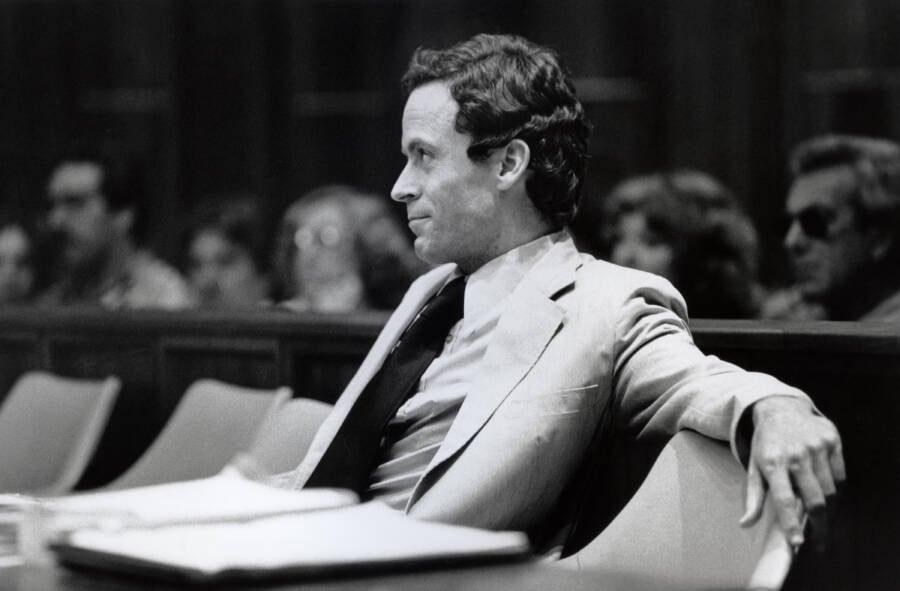
Ken Hawkins/Alamy Stock PhotoTed Bundy ultimately confessed to 30 homicides that he committed in seven states between 1974 and 1978.
On February 1, 1974, he broke into the basement of 21-year-old Lynda Ann Healy’s apartment in Seattle, bludgeoning her while she slept. The recurring choice of victims who were independent and often out on their own soon became a signature of his modus operandi.
In the spring and summer of 1974, even more reports emerged of disappearances from college campuses and public spaces — each incident involving abduction, sexual assault, and murder. Witnesses recalled seeing a young man, often with a distinctive physical detail like long, parted hair, who would appear suddenly, sometimes with a cast or sling on his arm, to ask for help or offer assistance.
Bundy’s Methods Evolve As The Timeline Of His Crimes Progresses
Bundy effectively used the good nature of people to manipulate them to his advantage. Whether it was donning a fake cast or adopting a demeanor of vulnerability, Bundy meticulously crafted an image that was both trustworthy and disarming. This chameleon-like ability to change his look — even his photographs seemed to show him in different guises — confounded authorities and helped Bundy dodge the law for years.
By the time Bundy left the Pacific Northwest for Utah in the mid-1970s, his methods had evolved even further. He began using more sophisticated means to lure victims, such as posing as a police officer or simply exploiting social situations where his charm could disarm any suspicion. The pattern was just as clear: young women were approached under seemingly benign circumstances, only to be abducted and later found murdered in remote locations.
His crimes in Colorado and Idaho followed the same script — victims lured into his vehicle, taken to isolated spots, and then subjected to brutal violence before their remains were discarded. It was when Bundy once again relocated, this time to Florida, however, that the full, brutal nature of his methodology came to light.
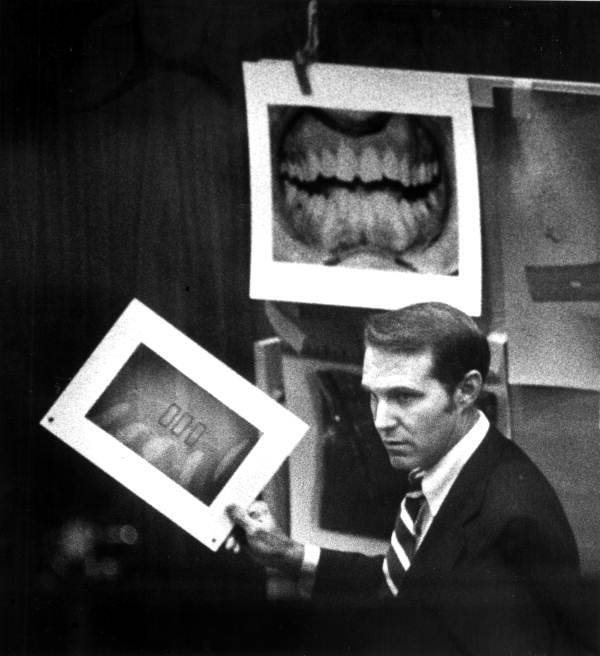
Wikimedia CommonsOdontologist Richard Souviron explaining bite mark evidence at the Chi Omega trial in May 1979.
Bundy’s Final Rampage Before His Murders Finally Came To An End
In January 1978, Ted Bundy went on an unprecedented rampage at the Chi Omega sorority house at Florida State University. In a single night, he attacked multiple women in rapid succession — using a log and other blunt instruments — before eventually being captured weeks later near the Alabama state line.
Even then, it wasn’t the end of Bundy’s story. His trial was a media sensation. People across the country struggled to reconcile with how such a charming young man could have harbored dark secrets.
What could make such a monster? Was Ted Bundy abused as a child himself? Even then, was that alone explanation enough for the heinous acts he committed — or was something within him fundamentally broken?
Since the trial and Bundy’s subsequent death, countless people have tried to find the answers. But in seeking these answers, they have only cemented the dark, twisted legacy Ted Bundy left behind.
The Murky Story Of Ted Bundy’s Childhood
Ted Bundy was born in Vermont on November 24, 1946, across the country from the Pacific Northwest communities he would one day terrorize.
His mother was Eleanor Louise Cowell and his father was unknown. His grandparents, ashamed of their daughter’s out-of-wedlock pregnancy, raised him as their own child. For nearly all of Bundy’s childhood, he believed his mother to be his sister.
His grandfather would regularly beat both Ted and his mother, causing her to run away with her son to live with cousins in Tacoma, Washington, when Bundy was five years old. There, Eleanor met and married hospital cook Johnnie Bundy, who formally adopted the young Ted Bundy and gave him his last name.
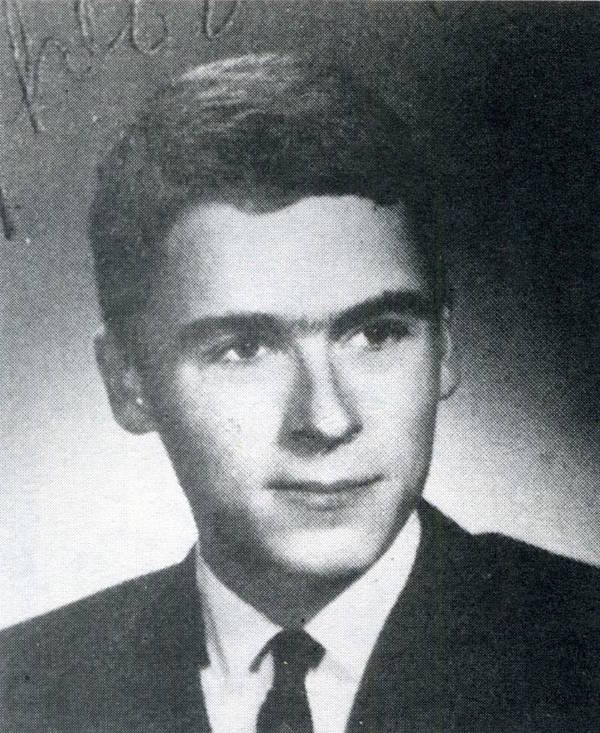
Wikimedia CommonsTed Bundy’s high school yearbook photo. 1965.
Bundy disliked his step-father and would later describe him to a girlfriend disparagingly, saying he wasn’t very bright and didn’t make much money.
Little else is known for sure about the remainder of Bundy’s childhood, as he gave conflicting accounts of his early years to different biographers. In general, he described an ordinary life punctuated by dark fantasies that affected him powerfully — though the degree to which he acted on them remains unclear.
The reports of others are similarly confused. Though Bundy described himself as a loner who would stalk the seedy streets at night to spy on women, many who remember Bundy from high school describe him as reasonably well-known and well-liked.
Bundy’s College Years And His First Attack
Ted Bundy graduated from high school in 1965, then enrolled in the nearby University of Puget Sound. He spent just one year there before transferring to the University of Washington to study Chinese.
He dropped out briefly in 1968 but quickly re-enrolled as a psychology major. During his time out of school, he visited the East Coast, where he likely first learned that the woman he believed to be his sister was actually his mother.
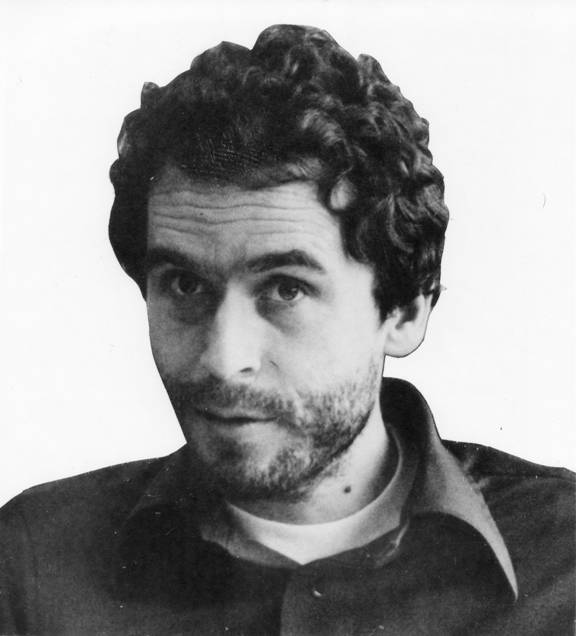
Wikimedia CommonsTed Bundy. Circa 1975–1978.
Then, back at UW, Bundy’s education continued and he started dating Elizabeth Kloepfer, a divorcée from Utah who worked as a secretary at the School of Medicine on campus. Later, Kloepfer was among the first to report Bundy to police as a suspect in the Pacific Northwest murders.
Also among the four people who gave police Bundy’s name was former Seattle police officer Ann Rule, who met Bundy at around this same time while they were both working at Seattle’s suicide hotline crisis center. Rule would later write one of the definitive biographies of Ted Bundy, The Stranger Beside Me.
In 1973, Bundy was accepted into the University of Puget Sound Law School, but after a few months, he stopped attending classes.
Then, in January of 1974, the disappearances began.
Ted Bundy’s first known attack was not an actual murder, but instead an assault on 18-year-old Karen Sparks, a student and dancer at the University of Washington.
Bundy broke into her apartment and bludgeoned her unconscious with a metal rod from her bed frame before sexually assaulting her with the same object. His assault left her in a 10-day coma and with permanent disabilities.
Ted Bundy’s Initial Murders In Seattle
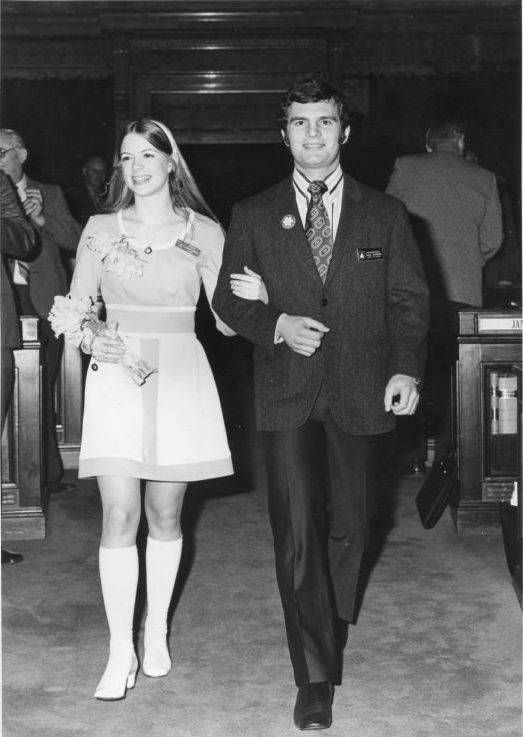
Personal photoTed Bundy victim Lynda Ann Healy.
Ted Bundy’s next victim and his first confirmed murder was Lynda Ann Healy, another UW student.
A month after his assault on Karen Sparks, Bundy broke into Healy’s apartment in the early morning, knocked her unconscious, then clothed her body and carried her out to his car. She was never seen again, but part of her skull was discovered years later at one of the locations where Bundy dumped his bodies.
Afterward, Bundy continued targeting female students in the area. He developed a technique: approaching women while wearing a cast or appearing otherwise disabled and asking them to help him put something in his car.
He would then bludgeon them unconscious before binding, raping, and killing them, dumping their bodies in a remote location in the woods. Bundy would often revisit these sites to have sex with their decaying corpses. In some cases, Bundy would decapitate his victims and keep their skulls in his apartment, sleeping beside his trophies.
“The ultimate possession was, in fact, the taking of the life,” Ted Bundy once said. “And then . . . the physical possession of the remains.”
“Murder is not just a crime of lust or violence,” he explained. “It becomes possession. They are part of you . . . [the victim] becomes a part of you, and you [two] are forever one . . . and the grounds where you kill them or leave them become sacred to you, and you will always be drawn back to them.”
Over the next five months, Bundy abducted and murdered five female college students in the Pacific Northwest: Donna Gail Manson, Susan Elaine Rancourt, Roberta Kathleen Parks, Brenda Carol Ball, and Georgann Hawkins.
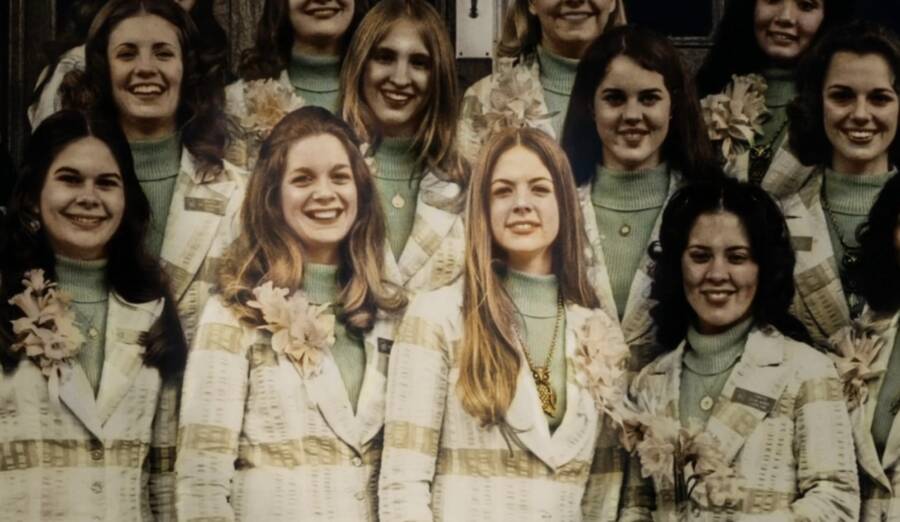
Ted Bundy: Falling for a Killer/Amazon StudiosGeorgann Hawkins (center right) with her Kappa Alpha Theta sorority sisters.
Responding to this rash of disappearances, police called for a major investigation and enlisted a number of different government agencies to help look for the missing girls.
One of these agencies was the Washington State Department of Emergency Services, where Bundy worked. There, Bundy met Carole Ann Boone, a twice-divorced mother of two whom he would date on and off for years as the murders continued — and with whom he would have a daughter, Rose.
Relocation To Utah And Arrest For Kidnapping
As the manhunt for the abductor continued, more witnesses produced descriptions that matched Ted Bundy and his car. Just as some of Bundy’s victims’ bodies were being discovered in the woods, Bundy was accepted to law school in Utah and moved to Salt Lake City.
While living there, he continued to rape and murder young women, including a hitchhiker in Idaho and four teenage girls in Utah.
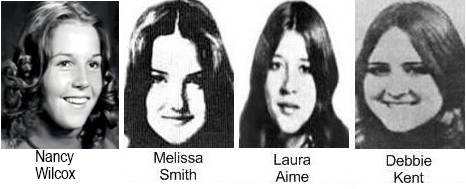
Personal photosThe women Ted Bundy killed in Utah in 1974.
Kloepfer was aware that Bundy had relocated to the area, and on learning of the Utah murders, she called the police a second time to reaffirm her suspicion that Bundy was behind the killings.
There was now a mounting pile of evidence pointing toward Ted Bundy, and when Washington investigators compiled their data, Bundy’s name appeared at the top of the suspect list.
Unaware of law enforcement’s growing interest in him, Bundy continued killing, journeying to Colorado from his home in Utah to murder more young women there.
Finally, in August 1975, Bundy was pulled over while driving through a Salt Lake City suburb, and police discovered masks, handcuffs, and blunt objects in the car. While this was not enough to arrest him, a police officer, realizing that Bundy was also a suspect in the earlier killings, put him under surveillance.
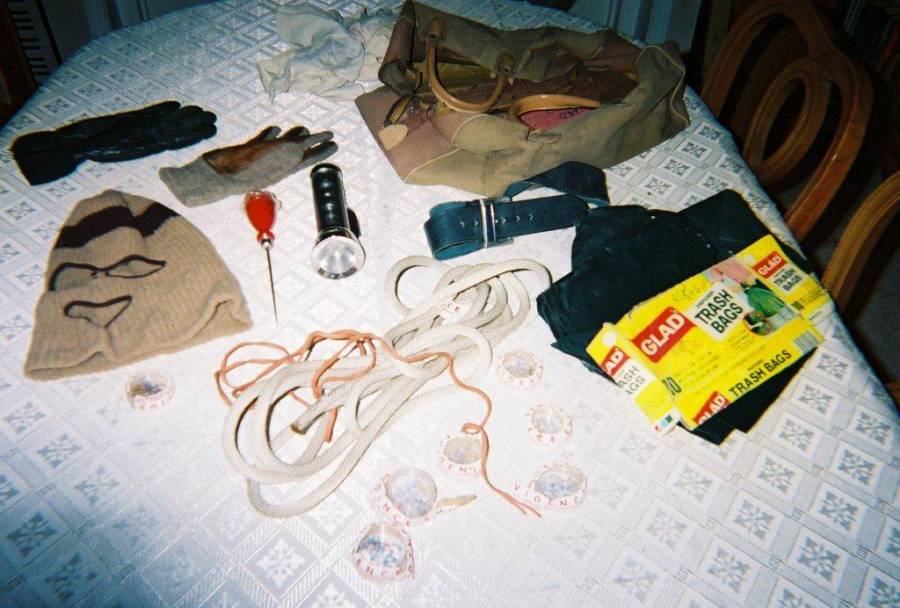
Kevin Sullivan/The Bundy Murders: A Comprehensive HistoryObjects found in Ted Bundy’s car.
The officers then found his Beetle, which he had since sold, where they discovered hair matching three of his victims. With this evidence, they put him in a lineup, where he was identified by one of the women whom he had attempted to abduct.
He was convicted of kidnapping and assault and sent to prison while police attempted to build a murder case against him — and to do so, they needed to talk to the people closest to Bundy, including Kloepfer and Boone.
Ted Bundy’s Relationships And Personal Life: A Tale Of Manipulation And Charm
When Bundy and Elizabeth Kloepfer first started dating in 1969, he was seemingly nothing more than a Washington law student. Most people considered him to be charming, intelligent, and engaging — a man who easily fit into regular society. Kloepfer witnessed that charisma firsthand.
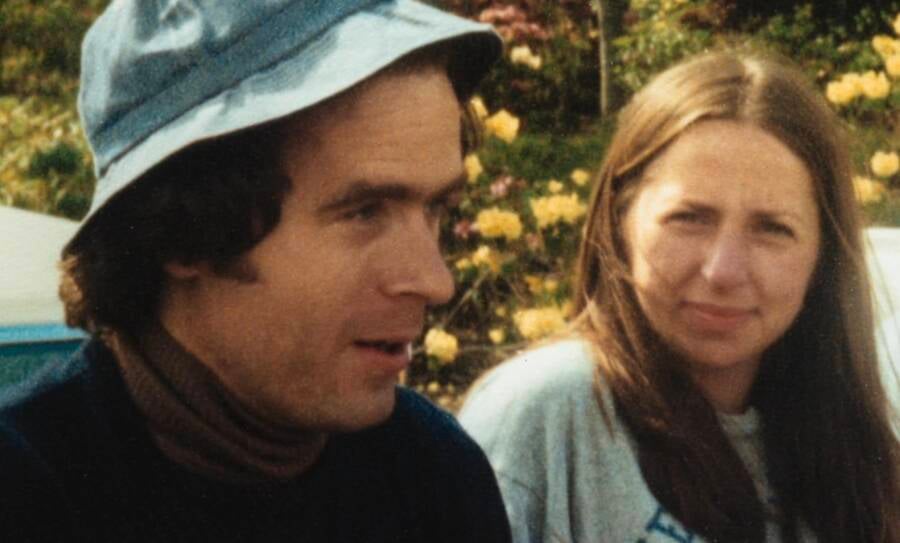
Ted Bundy: Falling for a Killer/Amazon StudiosTed Bundy and Elizabeth Kendall.
In their time together, Kloepfer saw a side of Bundy that most of his other acquaintances never did. Still, according to her own account in The Phantom Prince: My Life With Ted Bundy, she hadn’t expected Bundy to turn out to be such a violent man — even if he’d once tried to kill her, though she didn’t know until later.
“I can count on two fingers the times Ted threatened me or was the least bit violent towards me,” she wrote. “Yet I feel that I have lived through a violent time. I have spent too much of the last six years thinking about beatings, strangulations, rapes, the outrage of the brutal deaths of innocent people, and my own guilt.”
Kloepfer remained Ted Bundy’s girlfriend for nearly six years, up until he moved to Utah. Even during his first trial in 1976, the love she felt toward him had not gone away, even after he had been found guilty:
“Ted’s attorney asked that Ted be allowed some time with his family. We entered the judge’s chamber where Ted was frisked and his hands cuffed behind his back. I put my arms around him and told him I was sorry. He was drenched with sweat and stiff with tension. I kissed him on the cheek and whispered, ‘I love you.’ I hated myself for what I had done to him.”
Kloepfer, now known as Liz Kendall, did eventually remarry, living a life that was free of Bundy’s influence — one that was better for her and for her daughter Molly. At the time, many harsh things were said about her in the press, and it took a few years before she spoke about her relationship with Bundy. Even then, it was hard to reconcile the man she knew with the man he truly was.
But Kloepfer was not the only person close to Bundy who fell victim to his manipulation. His marriage to Carol Ann Boone while he was on death row was certainly complicated, but it was made even more so after the birth of their daughter, Rose.
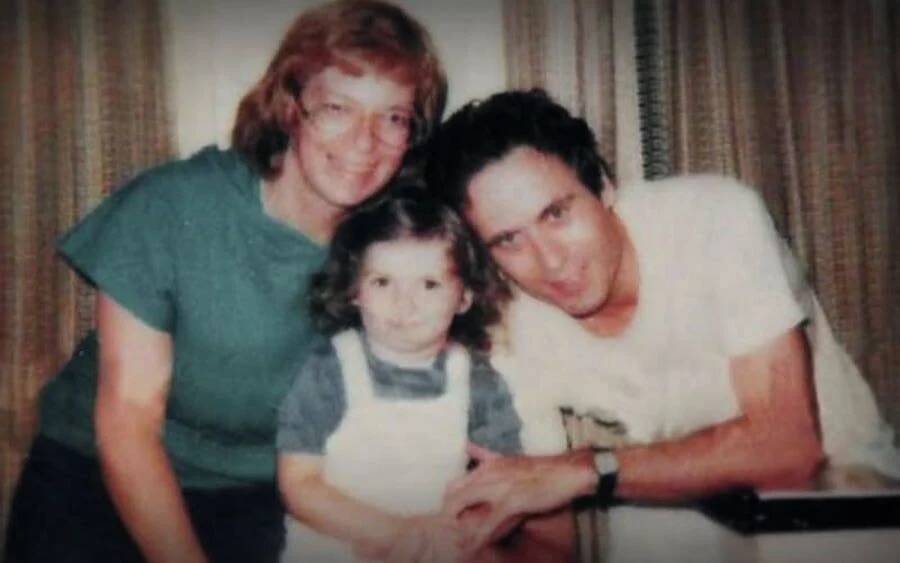
NetflixCarol Ann Boone, Rose, and Ted Bundy.
Rose was born in October 1982, a point of much speculation given that Bundy was not permitted conjugal visits while on death row. It’s believed that Bundy and Boone managed to be intimate during prison visits, possibly by bribing guards or finding secluded spots within the facility.
Boone was a steadfast supporter of Bundy, maintaining his innocence throughout his trials. “Let me put it this way, I don’t think that Ted belongs in jail,” she once said, speaking to the press. “The things in Florida don’t concern me any more than the things out west do.”
She had moved to Florida to be closer to him during his incarceration and often brought Rose to visit her father in prison, which allowed Bundy to spend some time with his daughter, albeit under the constraints of a prison environment. However, as Bundy began confessing to his crimes in a bid to delay his execution, Boone felt deeply betrayed.
Understandably, this led to her divorcing him in 1986 and ceasing all prison visits, effectively ending Rose’s contact with her father.
Ted Bundy’s Life In Prison — And His Successful Escapes
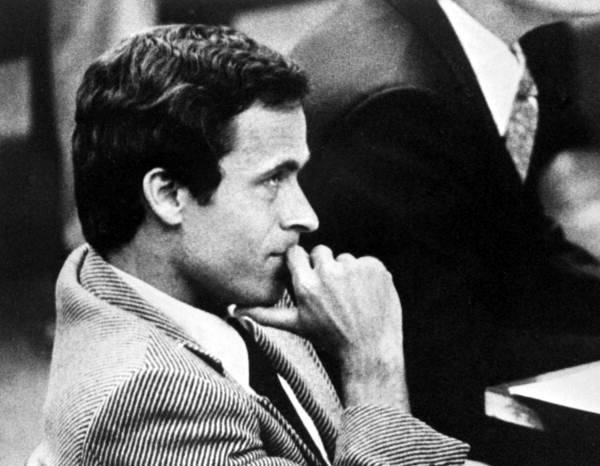
Wikimedia CommonsTed Bundy in court in Florida in 1979.
The arrest in 1975 didn’t stop Ted Bundy from killing, however. He was soon able to, for the first of two times in his life, escape from custody.
In June 1977, Bundy was transported from the Garfield County Jail in Glenwood Springs to the Pitkin County Courthouse in Aspen for a preliminary hearing. Serving as his own attorney, he was granted access to the courthouse law library without handcuffs or leg shackles. Nominally, he was researching the laws pertaining to his case. But the fact that he was his own counsel also meant he was unshackled — and when he saw his chance, he took it.
Bundy jumped from a second-story window, injuring his ankle upon landing. He then shed an outer layer of clothing and navigated through Aspen, eventually breaking into a hunting cabin where he stole food, clothing, and a rifle. He had planned to make his way toward Aspen Mountain, but resources were scarce, and it wasn’t long before he scrapped his plan to vanish into the wilderness.
Back in Aspen, he stole a car, hoping to put some distance between himself and the jail cell he was fleeing. But the reckless speed with which Ted Bundy left Aspen made him conspicuous, and police officers spotted him. He was recaptured after six days of being on the run.

Wikimedia CommonsPitkin County Courthouse, where Bundy jumped from the second window from the left on the second story to escape.
Ted Bundy’s next escape took place just six months later, this time from a jail cell.
After carefully studying a map of the prison, Bundy realized that his cell was directly beneath the living quarters of the prison’s chief jailer; the two rooms were separated only by a crawl space.
Bundy traded with another inmate to get a small hacksaw, and while his cellmates were exercising or showering, he worked away at the ceiling, scraping away layer after layer of plaster. The crawl space he made was small — very small. He began deliberately cutting back on meals in an effort to lose weight.
He also planned ahead. Unlike last time, when his escape had failed because he was without resources in the outside world, he stashed away a small pile of money smuggled to him by Carole Ann Boone, the woman who would later marry him in prison.
When he was ready, Bundy finished the hole and crawled up into the chief jailer’s room. Finding it unoccupied, he swapped his prison jumpsuit for the man’s civilian clothes and strolled out the jail’s front doors.
This time, Ted Bundy didn’t dawdle; he stole a car immediately and got out of town, making his way to Florida.
The Chi Omega Murders And Bundy’s Brutal Spree Of Attacks In Florida
It had been Ted Bundy’s intention to keep a low profile, but life in Florida was presenting unexpected challenges. Unable to produce identification, he couldn’t get a job; he was back to grifting and stealing in order to live. And his compulsion toward violence was simply too strong to stay dormant.
On January 15, 1978, two weeks after his escape, Bundy broke into a Chi Omega sorority house on the Florida State University campus.
Bundy first entered the room of 21-year-old Margaret Bowman, bludgeoning her with a piece of oak firewood as she slept and then strangling her with a nylon stocking. He then moved to the room of 20-year-old Lisa Levy, beating her unconscious, strangling her, and sexually assaulting her. Levy suffered severe injuries, including bite marks — a detail which would later re-emerge at Bundy’s trial.
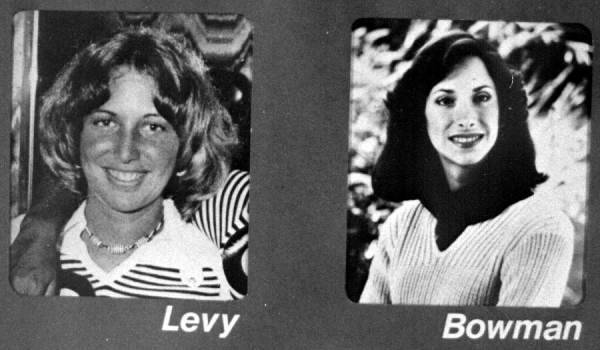
Wikimedia CommonsThe two women that Ted Bundy killed at FSU’s Chi Omega sorority house.
Bundy continued his rampage, attacking Kathy Kleiner and Karen Chandler, both 21, inflicting serious injuries to both before fleeing. Kleiner later attributed their survival to headlights from a car outside, which possibly startled Bundy and caused him to flee.
The entire attack lasted less than 15 minutes, and despite occurring in a house with more than 30 residents, it went largely unnoticed until it was over. After leaving the sorority house, Bundy broke into a nearby apartment and attacked another FSU student, Cheryl Thomas, beating her so badly she lost her hearing permanently.
Still on the run on February 8, Ted Bundy abducted 12-year-old Kimberly Diane Leach from her middle school and murdered her, concealing her body on a pig farm.
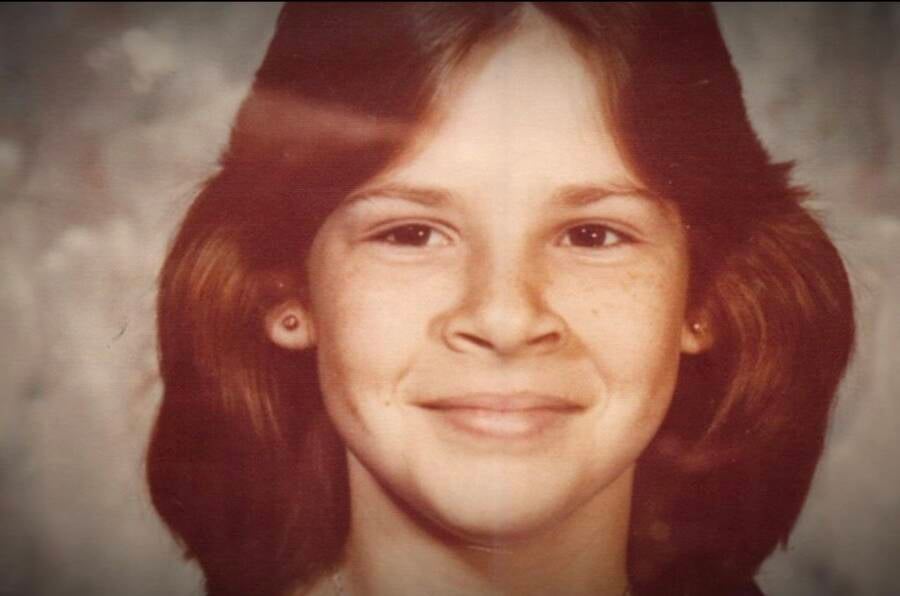
How It Really Happened with Jesse L. Martin/CNN OriginalsKimberly Diane Leach, the 12-year-old victim of Ted Bundy.
And then, once again, his reckless driving caught the attention of the police. When they realized that his plates belonged on a stolen car, they pulled him over and found the IDs of three dead women in his vehicle, linking him to the FSU crimes.
“I wish you had killed me,” Bundy told the arresting officer.
The Trial And Execution Of Ted Bundy
Throughout his ensuing trial, Ted Bundy sabotaged himself by ignoring the advice of his lawyers and taking charge of his own defense. He unnerved even those assigned to work with him.
“I would describe him being as close to being like the devil as anyone I ever met,” said defense investigator Joseph Aloi.
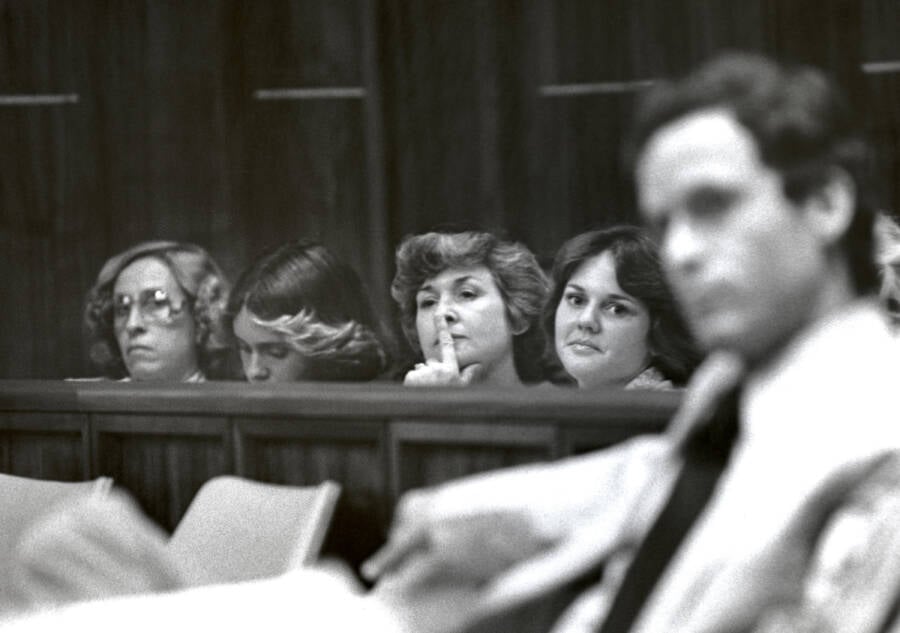
Ken Hawkins/Alamy Stock PhotoA group of young women, sometimes referred to as “Bundy’s Groupies,” at the trial.
Bundy was ultimately convicted and placed on death row at Florida’s Raiford Prison, where he suffered abuse from other prisoners (including a gang rape by four men, some sources say) and conceived a child with Carole Ann Boone, whom he’d married while he was on trial.
Ted Bundy was finally executed by electric chair on January 24, 1989. Hundreds of people gathered outside the courthouse to celebrate his death.
“For everything he did to the girls — the bludgeoning, the strangulation, humiliating their bodies, torturing them — I feel that the electric chair is too good for him,” said Eleanor Rose, the mother of victim Denise Naslund.
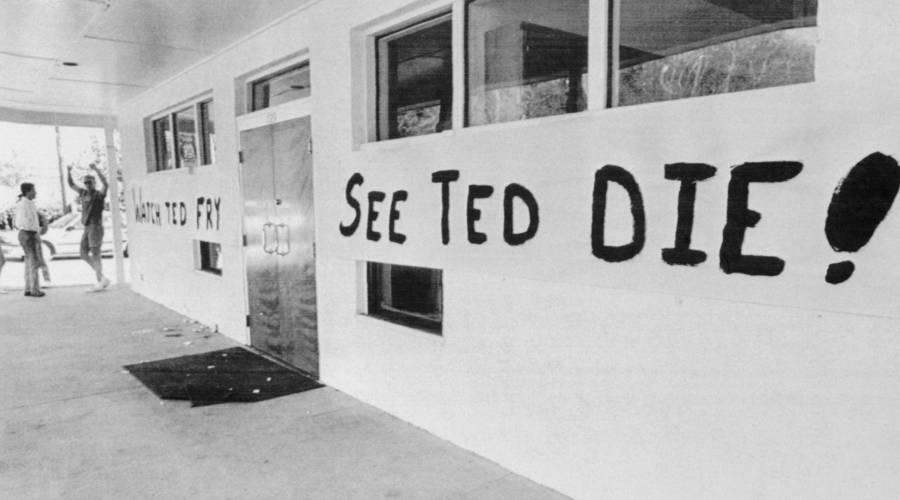
Bettmann/Getty ImagesFSU’s Chi Phi fraternity celebrates the execution of Ted Bundy with a large banner that says “Watch Ted Fry, See Ted Die!” as they prepare for an evening cookout where they will serve “Bundy burgers” and “electrified hot dogs.” 1989.
Though he confessed to many murders before his death, the true number of Bundy’s victims remains unknown. Bundy denied certain killings, despite physical evidence tying him to the crimes, and alluded to others that were never substantiated.
Ultimately, all of this has led authorities to suspect Ted Bundy killed anywhere from 30 to 40 women, making him one of the most infamous and terrifying serial killers in American history — and perhaps “the very definition of heartless evil.”
Despite, this the rise of “Ted Bundy media” has only grown in recent years, with various films, books, and documentaries focusing on the killer, some of which stray from the documented evidence on Bundy and his crimes. While most of these exist purely to document the heinous nature of Bundy’s crimes, however, several have faced backlash for doing just the opposite, possibly romanticizing the charming man he portrayed himself as.
The Ted Bundy Phenomenon: Movies, Documentaries, And Books That Shaped His Legacy
Perhaps the most famous and controversial film about Bundy was the 2019 biographical crime drama Extremely Wicked, Shockingly Evil and Vile, starring Zac Efron as Bundy and Lily Collins as Liz Kendall. The film focuses primarily on the relationship between the two, told from Kendall’s perspective — though this decision came at a cost.
For some viewers and critics, this choice showed how greatly Bundy had manipulated Kendall, and without seeing his crimes portrayed on screen, viewers gained a deeper understanding of how Liz Kendall had likely experienced the situation. At the same time, however, critics argued that the film didn’t properly illustrate how “shockingly evil” Bundy actually was, with others saying the film’s initial conceit falls apart before the second half.

NetflixLily Collins and Zac Efron in Extremely Wicked, Shockingly Evil and Vile.
That same year, Netflix also released the docuseries Conversations with a Killer: The Ted Bundy Tapes, which utilized archival footage, interviews, and Bundy’s own tape-recorded conversations to offer a more comprehensive look into his psyche, crimes, and the media frenzy surrounding his trials. A year later, in 2020, Amazon Prime released Ted Bundy: Falling for a Killer, which offered a new perspective on the story through the lives of the women in Bundy’s life.
Before that, though, was Ann Rule’s 1980 book, The Stranger Beside Me, which has been lauded as a seminal work in true crime. Ann Rule worked with Bundy at a crisis hotline for some time, and the book offered an intimate look at his double life — and the shock of discovering his true nature. Likewise, Stephen G. Michaud and Hugh Aynesworth’s Ted Bundy: Conversations with a Killer, presented Bundy’s story in his own words, using more than 150 hours of interview recordings.
The debate around the ethical impact of retelling Bundy’s story has ramped up in recent years, especially when charismatic actors like Efron are cast as Ted Bundy. Like other controversies surrounding true crime dramatizations — notably, Ryan Murphy’s Dahmer, another Netflix production — there is concern over whether these stories simply retell events from Bundy’s life for a profit, or if they are intended to honor victims and expose the truth.
In either case, the fascination with Ted Bundy has not diminished much in the 50 years since he first carried out his gruesome murders.
Next, learn how Ted Bundy helped police catch Gary Ridgway, perhaps America’s deadliest serial killer. Then, read up on Ted Bundy’s daughter Rose.





